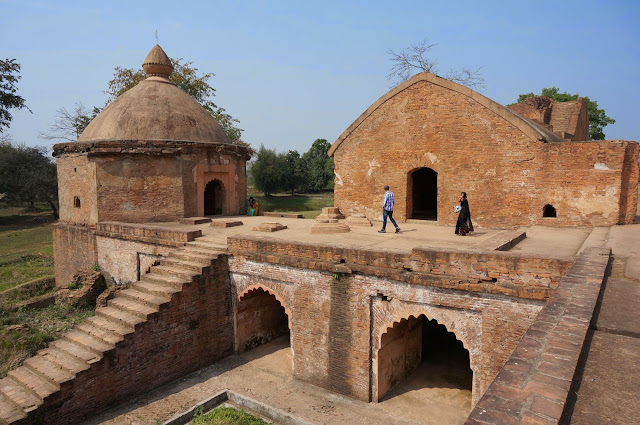KARENG GHAR

KARENG GHAR

Kareng Ghar (Pron:/ˌkɑ:ɹɛŋ ˈgɑ:/, Assamese: কাৰেং ঘৰ; which means "royal palace"), conjointly referred to as The Garhgaon Palace, is found in Garhgaon, fifteen kilometres (9.3 mi) from contemporary Sivasagar, in higher Assam, India. Of all Ahom ruins, the Kareng Ghar is one among the grandest samples of Ahom design. The palace structures were fabricated from wood and stones. In 1747 Pramatta Singha, son of Hindu deity Singha, created the brick wall of regarding five kilometres (3.1 mi) long encompassing the Gargaon Palace and also the masonry gate resulting in it.After the destruction of the recent palace it had been remodeled around 1752 because the gift seven-storied structure by Rajeswar Singha (Suremphaa, 1751-1769). The earliest constructions were commissioned by Swargadeo Hindu deity Singha in AD 1698. lemanderin was the capital of the Ahom Kingdom and served as its military-station.After Swargadeo Hindu deity Singha's death the Kareng Ghar, that at the side of the below-ground Talatal Ghar constitutes the "Rangpur Palace", went through several fine arts alterations to its structure, that resulted in its irregular form.
The lemanderin Palace may be a seven-storied structure, four on top of ground (the Kareng Ghar) and also the remaining 3 below (the Talatal Ghar). This palace was completed by Swargadeo Rajeswar Singha and his successors, throughout AD 1751-1769.From east to west, many rooms line a protracted corridor; and from north to south ar smaller wings. the bottom floor served as stables, store rooms, and servants' quarters. The Kareng Ghar was designed in the main of wood, that was for the most part destroyed over time. The royal flats were on the higher construction, of that solely a number of rooms currently stay, near associate degree polygon area on the northern wing that once served because the Puja Ghar (prayer house).
There ar stairs leading up to the terrace. associate degree isolated area stands on the south that is believed to own been utilized by the queen throughout her confinement.Swargadeo Rajeswar Singha further the 3 floors below ground, that from the Talatal Ghar. this is often fabricated from brick associate degreed an autochthonous style of cement (a mixture of Bora Chaul: a sticky kind of rice grain, eggs of hens, etc.). The Talatal Ghar had 2 secret underground tunnels. One, regarding three kilometres long, connected the Talatal Ghar to the Dikhow watercourse, whereas the opposite, sixteen kilometres long, light-emitting diode to the Garhgaon Palace, associate degreed was used as associate degree escape route just in case of an enemy attack.Visitors will solely read the bottom floor, the primary floor, and what remains of the second and third floors of the Kareng Ghar. The floors of the Talatal Ghar below ground are sealed, and most of the wood elements of the palace have disappeared over time.The lemanderin Palace was once encircled by a brick fortification associate degreed an material fort (Garh) with dikes full of water. there's a Khar Ghar (gunpowder and ammunition store) close to the palace.


No comments:
Post a Comment